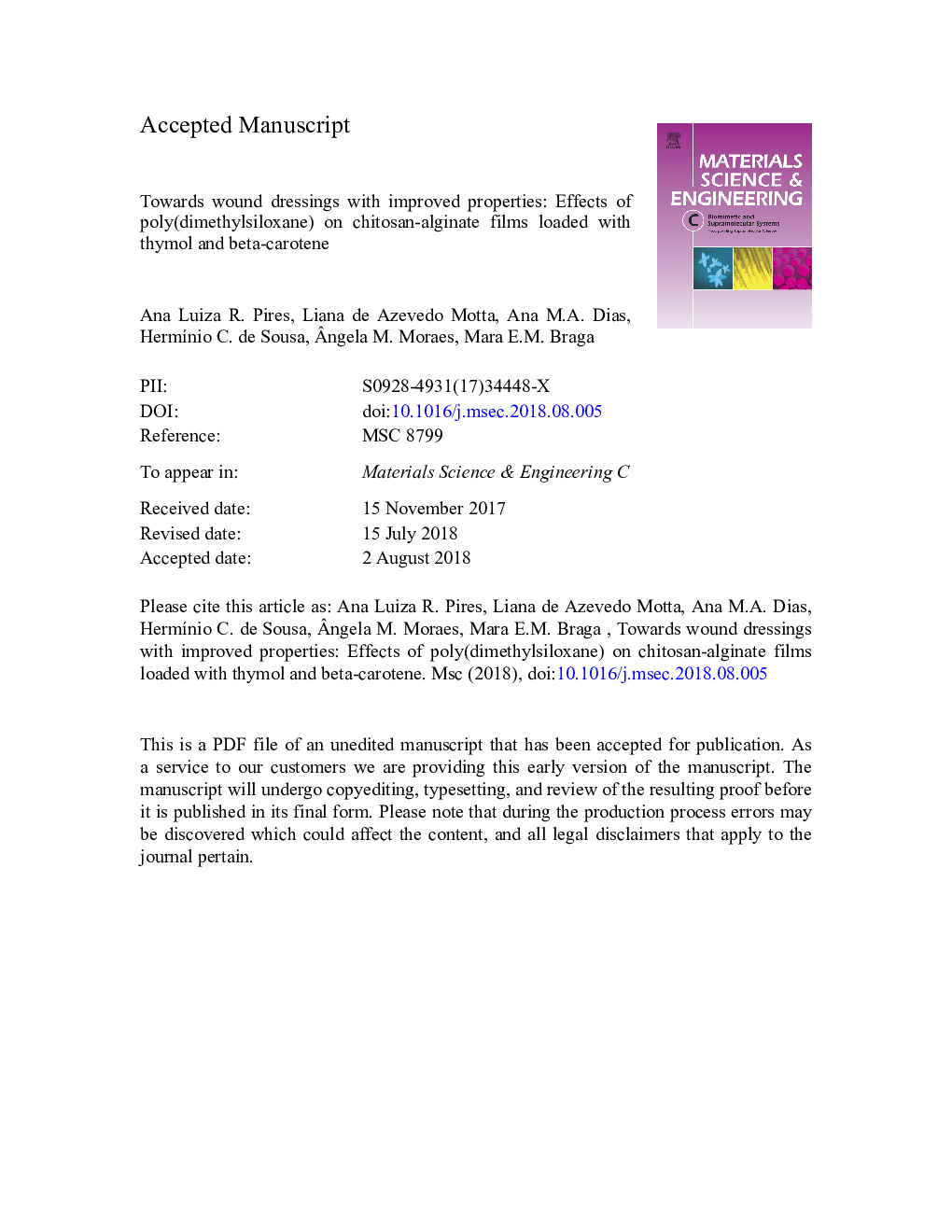| Article ID | Journal | Published Year | Pages | File Type |
|---|---|---|---|---|
| 7865707 | Materials Science and Engineering: C | 2018 | 40 Pages |
Abstract
This study aimed to evaluate the effect of poly(dimethylsiloxane) on the mechanical properties of chitosan-alginate (CA) polyelectrolyte complexes (PECs) with potential application as wound dressing biomaterials. For that purpose, different amounts of poly(dimethylsiloxane) were incorporated during the formulation of the PECs. Results showed that the highest tensile strength was observed when using 0.1â¯g of poly(dimethylsiloxane) per gram of PEC (CAS10). This formulation was also non-hemolytic, capable of inducing thrombus formation to potentially reduce bleeding, and additionally presented high stability when exposed to physiological fluids and/or conditions simulating patient bathing. To improve its wound healing capacity, this formulation was loaded with thymol and beta-carotene (anesthetic, anti-inflammatory and antioxidant compounds) by the supercritical carbon dioxide impregnation/deposition (SSI/D) method at 250â¯bar and 45â¯Â°C for 14â¯h and at two depressurization rates (5 and 10â¯bar/min). The PECs were also loaded by conventional impregnation in solution for comparison purposes. Higher bioactive loadings, of 1.8â¯Â±â¯0.2 and 1.3â¯Â±â¯0.03â¯Î¼g per milligram of PEC for thymol and beta-carotene, respectively, were observed when using SSI/D and a higher depressurization rate (10â¯bar/min). These values do not correspond to the maximum loaded amount of each bioactive, which were strongly retained in the PEC structure due to favorable bioactive-polymer interactions, originating matrices that should present a more sustained release during in vivo applications.
Related Topics
Physical Sciences and Engineering
Materials Science
Biomaterials
Authors
Ana Luiza R. Pires, Liana de Azevedo Motta, Ana M.A. Dias, HermÃnio C. de Sousa, Ãngela M. Moraes, Mara E.M. Braga,
